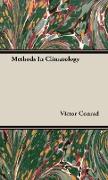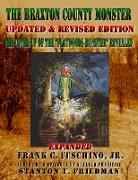Methods in Climatology
BücherAngebote / Angebote:
METHODS IN CLIMATOLOGY by VICTOR CONRAD. PREFACE: CLIMATE influences the surface of the earth, and this con versely, in its varieties, determines the climate under other wise equal conditions. This intimate mutual connection makes climatology and climatography appear as parts of geog raphy, because they are essentially necessary to describe the sur face of the earth and its changes. These ideas find their expression in the fact that generally in colleges and universities, climatology as a whole is treated in the geographical departments. Perhaps the dependent role of climatology may be attributable also to the fact that geographers have so greatly furthered this science. For the most part, climatographies have been written by ge ographers. Therefore, geographical methods are kept in the fore front, and specifically climatological methods are not so much used. It would be satisfying if this book offered a bridge connecting the two realms. To judge from the authors many years of experience in Europe, followed by a few years in the United States, the student in ge ography has perhaps sufficient knowledge of climatology, but he does not know how to deal with the original data of observations. He is, I should say, familiar with the results but not with the ways of getting them. This holds, particularly, for the different methods of mathematical statistics which can be adapted to an individual representation of the climates only thus can too-schematical descriptions be avoided. This book should make the student acquainted with a number of methods of mathematical statistics and theory of probability applicable at once to climatological problems. Approximations are used as much as possible in order to facilitate arithmetic. The student who is interested in the mathematical proofs and deriva tions as well as in their philosophical background must be referred to the special technical literature. The general introduction presents climatology as a world science, and its international organization. The number of ob servations in the meteorological register makes the necessity of statistical methods evident. Their special application to clima tological series is discussed. An instruction, easy to understand, is given for computing periodical phenomena by means of harmonic analysis. In the foregoing, the overwhelming role of the frequency distri bution has been emphasized. This idea led L. W. Pollak to intro duce a new system of treating climatological observations by means of automatic statistical machines. This system covers the entire body of the observational data and may represent the future of rational climatological statistics. Pollaks method is not dis cussed here, however, because only with the resources of great institutions is it practicable. The general representation of climatological elements, factors, etc., is followed by discussions of the special characteristics of the single elements. The radiation elements are not dealt with. As far as frequen cies and different correlations with other elements are concerned, the methods are identical with those applied to other climatological elements, on the one hand. On the other, such a discussion would have had to include the physical and astronomical nature of the subject. This exceeds the range of this book. The first two parts of the preseat book are concerned with the variations of the elements in the course of time at one fixed place. The third part presents the comparison of the elements which are observed synchronously at different places, and arrives at their geographical distribution...
Folgt in ca. 10 Arbeitstagen




